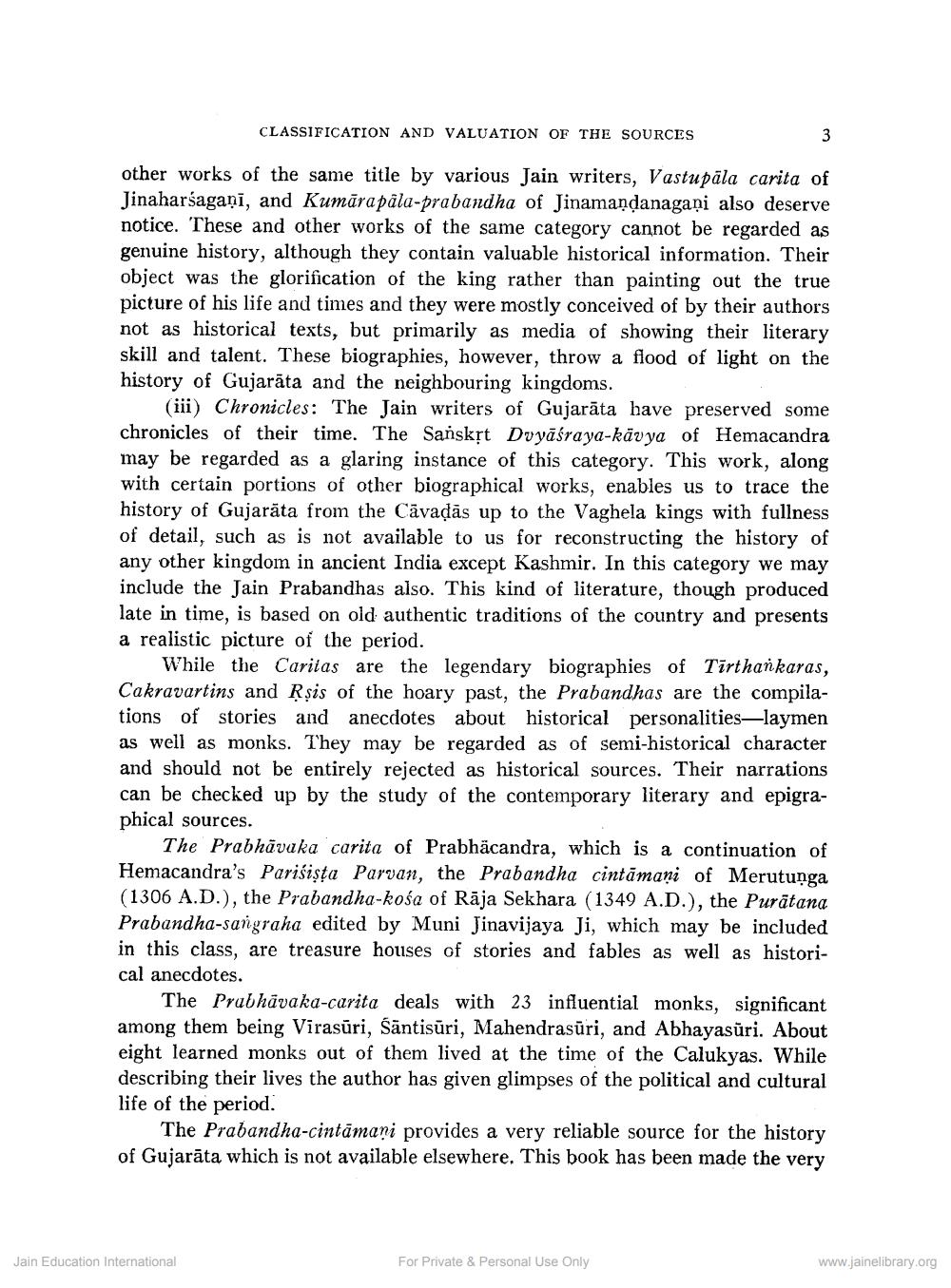________________
CLASSIFICATION AND VALUATION OF THE SOURCES
other works of the same title by various Jain writers, Vastupäla carita of Jinaharsagani, and Kumāra påla-prabandha of Jinamandanagani also deserve notice. These and other works of the same category cannot be regarded as genuine history, although they contain valuable historical information. Their object was the glorification of the king rather than painting out the true picture of his life and times and they were mostly conceived of by their authors not as historical texts, but primarily as media of showing their literary skill and talent. These biographies, however, throw a flood of light on the history of Gujarāta and the neighbouring kingdoms.
(iii) Chronicles: The Jain writers of Gujarāta have preserved some chronicles of their time. The Sanskệt Dvyāśraya-kävya of Hemacandra may be regarded as a glaring instance of this category. This work, along with certain portions of other biographical works, enables us to trace the history of Gujarăta from the Cāvadās up to the Vaghela kings with fullness of detail, such as is not available to us for reconstructing the history of any other kingdom in ancient India except Kashmir. In this category we may include the Jain Prabandhas also. This kind of literature, though produced late in time, is based on old authentic traditions of the country and presents a realistic picture of the period.
While the Caritas are the legendary biographies of Tirthankaras, Cakravartins and Rșis of the hoary past, the Prabandhas are the compilations of stories and anecdotes about historical personalities—laymen as well as monks. They may be regarded as of semi-historical character and should not be entirely rejected as historical sources. Their narrations can be checked up by the study of the contemporary literary and epigraphical sources.
The Prabhāvaka carita of Prabhācandra, which is a continuation of Hemacandra's Parisista Parvan, the Prabandha cintāmani of Merutunga (1306 A.D.), the Prabandha-kośa of Rāja Sekhara (1349 A.D.), the Purātana Prabandha-sangraha edited by Muni Jinavijaya Ji, which may be included in this class, are treasure houses of stories and fables as well as historical anecdotes.
The Prabhāvaka-carita deals with 23 influential monks, significant among them being Virasūri, Säntisūri, Mahendrasūri, and Abhayasuri. About eight learned monks out of them lived at the time of the Calukyas. While describing their lives the author has given glimpses of the political and cultural life of the period.
The Prabandha-cintamani provides a very reliable source for the history of Gujarāta which is not available elsewhere. This book has been made the very
Jain Education International
For Private & Personal Use Only
www.jainelibrary.org




